British Embassy Helsinki’s 26 Days to COP26 shares the action, insight, views and solutions of people and organisations from all walks of life, acting on climate change.
Launching 26 Days to COP26
British Ambassador to Finland, Theresa Bubbear, and Italian Ambassador to Finland, Sergio Pagano, discuss the two countries’ joint COP26 Presidency and express their wish for decisive and swift climate action during the UN’s Climate Change Conference in November 2021.
“Our wish for COP26 is that the global community makes it a moment future generations can be proud of.
We must agree swift, decisive and concrete action on climate change, while maintaining a determination to leave no one behind.”
Haikus For Humanity
Artist Irina Björklund, in collaboration with The Shubie Brothers and Central Line Entertainment, is starting up Haikus For Humanity: a multilingual musical project spanning all continents, spreading awareness of biodiversity loss, and channeling resources into forests and reforestation.
“My life changed the day I read Sir David Attenborough’s A Life On Our Planet.
I needed that kick to realize how close we are to losing the most precious tool we have for saving the future of our humanity, our beautiful forests and biodiversity.
I felt my responsibility as an artist to spread a message around the globe to help our planet heal.
The pandemic has shown us that we humans are simple creatures of habits, and those habits can be changed easily, if only the rules and availability of things are changed.
People around the world are ready and willing to change their habits, for the future of our planet, for the future of humanity.”
Kerttu Kotakorpi, meteorologist
Meteorologist Kerttu Kotakorpi sees the effects of our changing climate in her work every day.
“We have extreme temperatures, extreme weather happening all around the world. We see the catastrophic consequences of rising temperatures and growing precipitation.
Now it’s really time to act.”
Amanda Lightbody, artist
Amanda Lightbody, a UK visual artist, uses art to raise issues of climate change, biodiversity loss and injustice.
“The climate emergency is entwined with poverty and those who have contributed little, often suffer the most. The hope then for my art is that it builds community, connects people up and becomes a tool to promote exploration and awareness of climate change.
My wish for COP26 is that decision makers commit to solutions that are rooted in justice; that leaders from around the world take courageous steps forward towards immediate action, action that inspires and encourages us all.”
Dr. Klemetti Näkkäläjärvi
Dr. Klemetti Näkkäläjärvi, a Saami researcher from Enontekiö, North Finland, focuses on Saami culture, language and livelihoods, as well as environment, biodiversity, the Arctic, climate change and protection of traditional knowledge. He has studied climate adaptation of Saami people during the SAAMI research project.
“Adapting to climate change is about the future of Saami culture. The reindeer livelihood maintains the Saami identity, language and culture. They are the roots that unite different generations and create cultural continuity.
My message for COP26 is: make good decisions for the climate, environment, and for us all. And respect the holders of traditional knowledge.
Climate change equals cultural change for many indigenous people. They should be given means and resources for cultural adaptations.”
Activist Grannies
The Activist Grannies are a network of Grannies (and Grandpas) who want to share their life experience and wisdom to help save our planet as a good place to live for their grandchildren.
“We have something that we call granny wisdom, and I think that differentiates us from the other groups, which are active in the climate movement.
From this granny wisdom we have created our two keywords. One is moderation and the other one is hope.”
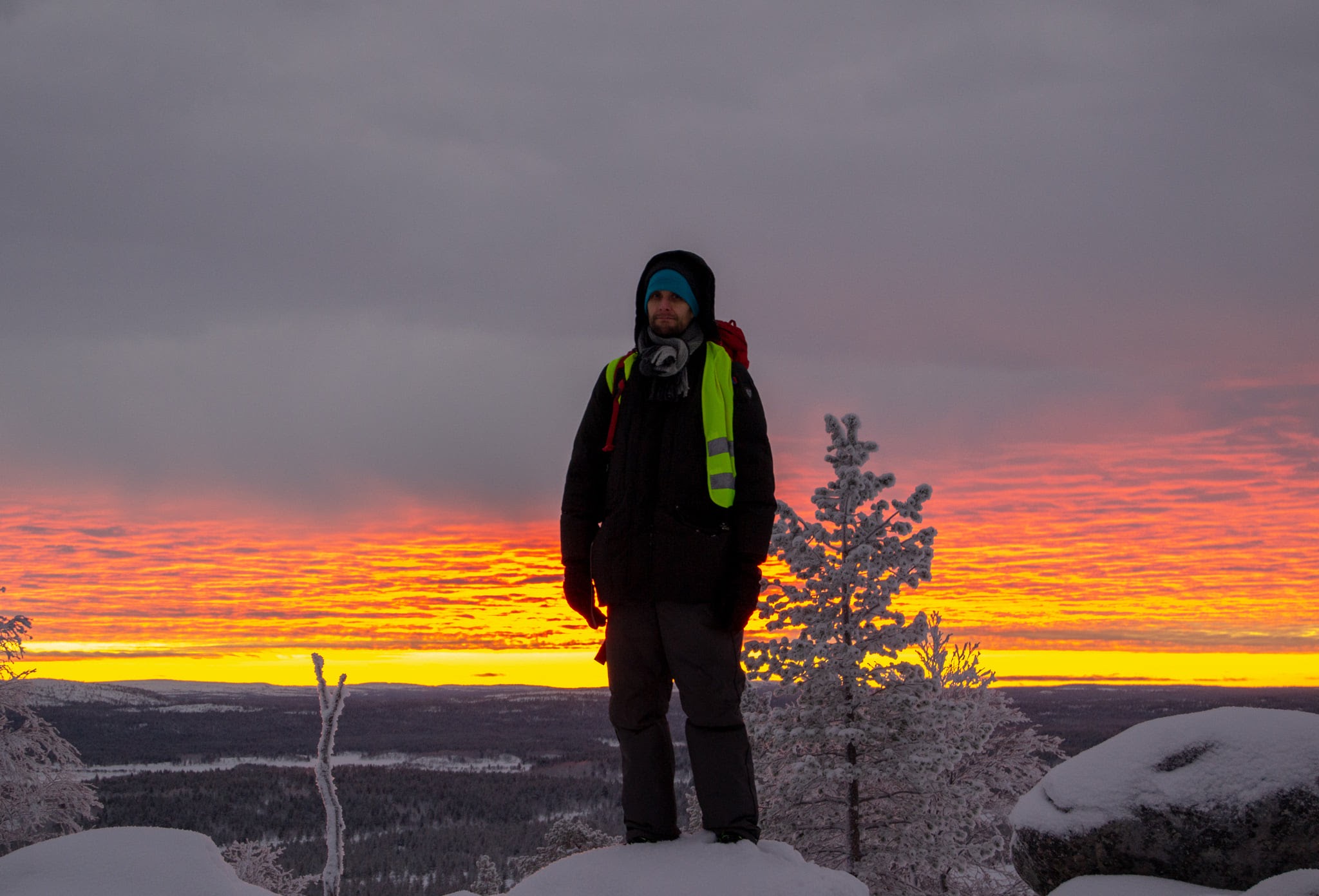
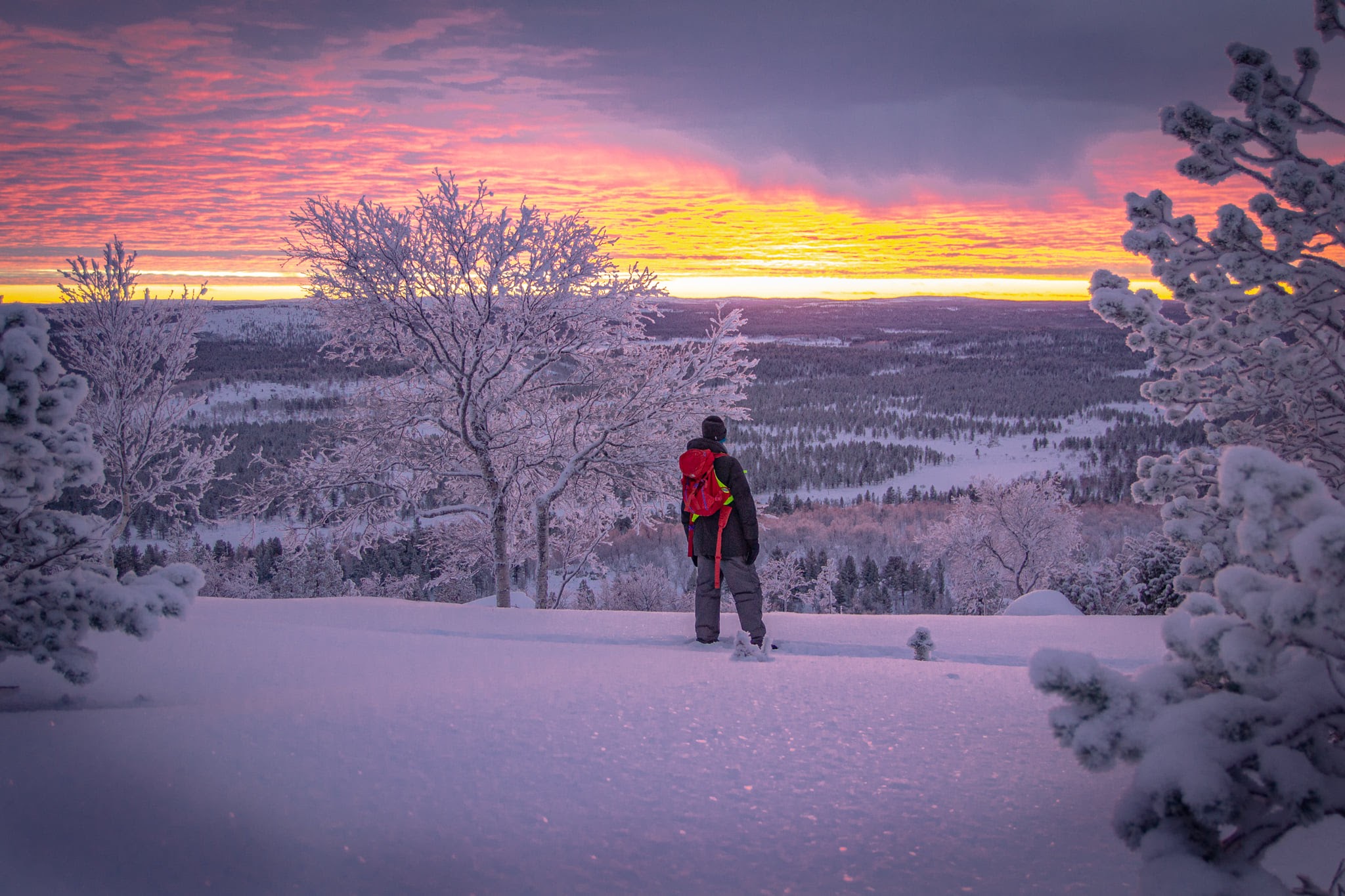
Timo Kuusiola, climate specialist and activist
Timo Kuusiola
“I have been involved in climate and environmental issues for the last ten years. I spent the first six years working on the municipal sector mainly on energy issues. I have to say that I have not always been so conscious about the complexity of the problem and the effects that environmental disasters would have. Although the evidence has been there for a long time. Ten years ago there was not so much knowledge about the complexity of the problem. The IPCC report in 2015 spurred a huge change in my own behavior and level of knowledge. After that, I have started systematically to decrease my own climate footprint and started to critically examine the ways we are trying to tackle the problem.
I have always steered my career in a direction where I believed I could make the biggest impact. After the IPCC 2015 report, I started to be more interested in political influencing. Since 2017 I have been self-employed and started a couple of projects and initiatives that have been focusing on political influencing on environmental issues. In 2018 we started a think tank with my friends called Creatura. The primary idea for Creatura is to understand how the problems we face are interlinked – and thus to focus on a systemic approach to environmental and social problems. The initial hurdle of founding a new entity has not been very easy because there is not much funding for projects working towards visualising systemic change.
My wish for COP26
My wish for COP26 is a systemic change towards a fair and ecologically sustainable world.
COP26 is going to be a crucial turning point and an opportunity for a systemic change. Currently we are heading for the end of our current civilization and I think that is a thing that needs to be said out loud. We also need to start to treat this problem as a systemic crisis, not as a separate climate crisis. The Covid pandemic has shown us how interdependent we are with nature and each other. That is why it is not sufficient to look only at countries’ emissions and actions within national boundaries. Inequality within and between nations will be a crucial question when solving the systemic crisis. That is why wealthy countries have to closely consider all of their actions’ impact on this issue, and to always whether their actions contribute to further inequality.
The biggest question for me is the country’s emission reduction pathways which are dependent on decoupling on economic growth and environmental problems. That has been proven to be a very dangerous path because it is very unlikely to succeed if want to tackle inequality, biodiversity loss, and climate disaster. This is why wealthy countries should call into play a climate and natural resource budget that has limits to cumulative climate emissions and natural resources for the years 2020-2050 based on the newest research. There should also be some kind of sanction mechanism. One option could be that every five years that some country does not succeed on their emission targets they have to pay a sanction to the climate fund that is directed to help poor countries on their green development targets. That would be in addition to the climate funding that wealthy countries have already promised in the Paris Agreement.”
The Finnish Association for Nature Conservation
Climate Policy Officer Anna Ikonen discusses the action of the Finnish Association for Nature Conservation (FANC). The grassroots organisation supports its members on the local level and nationally engages in political processes to help the environment.
“What we expect from COP26 is commitment and action. The climate crisis is already here and the time to act is now.
The next few years are crucial. So for COP26, we expect big emitters to set an example and come forward with ambitious plans for carbon neutrality in the coming decades. Additionally, what is urgently needed is ramping up funding for adaptation and mitigation measures. To help the developing nations cope with the intensifying climate crisis, there is a need for more climate financing.”
Paulig
It’s time to start the transformation of global food system
“Current food systems generate more than 25% of global greenhouse gas emissions and change in how we eat, how we farm, how we produce and how much food we waste is needed. Paulig, as an international food & beverage company, is committed to limiting the global temperature rise to a maximum of 1.5°C. Paulig is among the forerunner companies in the food industry, and we have science-based climate targets from our own operations and value chain which are approved by the Science Based Targets initiative.
Systemic changes are needed to fix the prevalent sustainability issues in our industry. To make them possible, we need ambitious climate goals, supporting policies and regulatory frameworks, which would stimulate climate actions and investments towards zero emissions across global food supply chains.”
Norwich City FC
Norwich City FC is making the world of sports more sustainable. The football club has brought in some Finnish influence both to the playing field through Teemu Pukki – but also in their operations through a sustainability partnership with MM Kotkamills.
“We’ve also introduced a sustainability policy into the club’s departmental and indeed individual objectives to ensure that everyone from fans, to staff, to players and to club partners, is as fully sustainable as possible as we move into the future.
We all know how important December 2015 was, and not just for Norwich’s win at Old Trafford. We’re all approaching stoppage time to achieve the goals set out in the Paris Agreement on climate change. And we want to see leaders in all industries spearhead sustainable changes across the world.”
Doctors for Climate
Medical professionals in Ilmastolääkärit (Doctors for Climate) bring attention to how the climate crisis poses a direct threat to human health.
Finnish medical organizations declared a climate emergency in January 2021 and called for rapid actions to mitigate climate change. They represent more than 30 000 medical professionals.
“Without a healthy Earth we do not have a prospect of a good and secure life for ourselves or future generations. It is no longer possible to sustain our living standards on overconsumption.
We request you, the decision makers, to make the difficult and unpleasant but necessary decisions that are needed in the transition towards a sustainable society.”
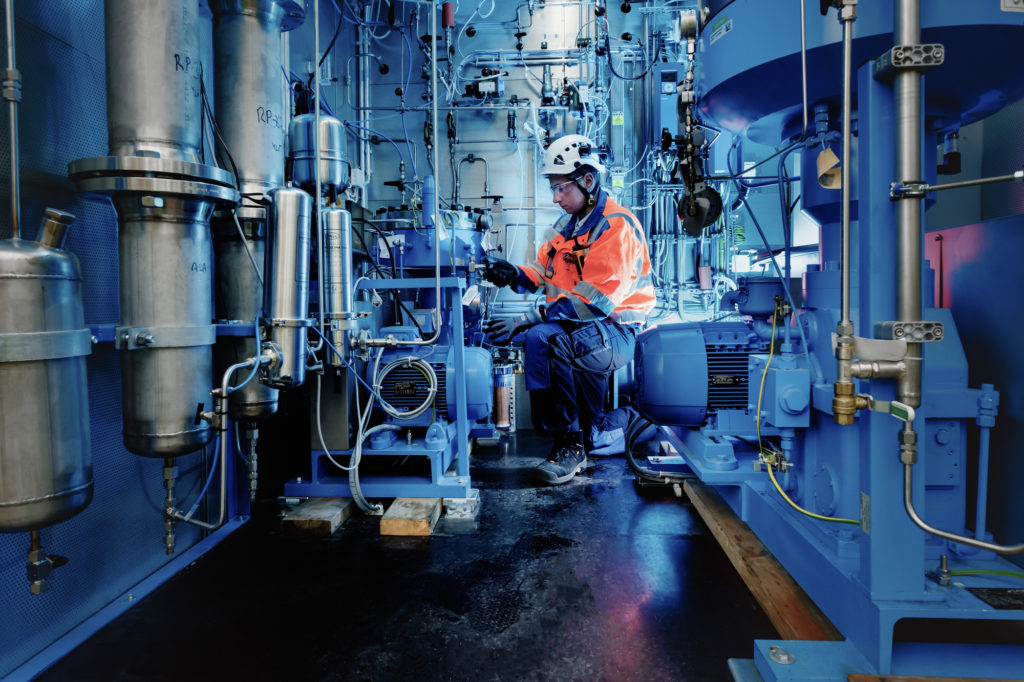
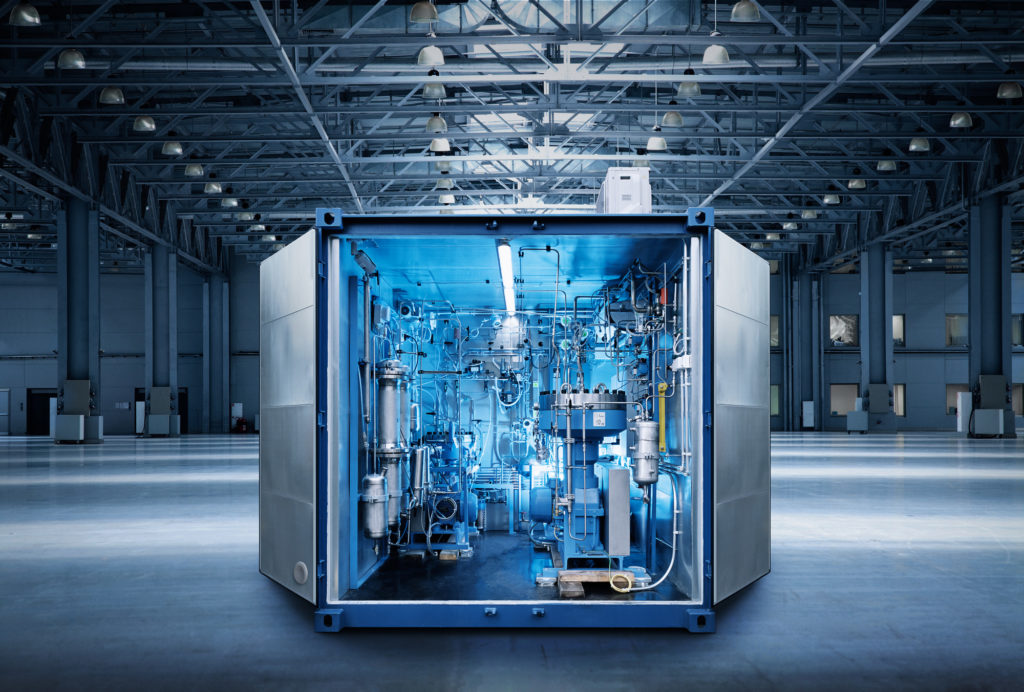
VTT Technical Research Centre of Finland
Paavo Porri, researcher at VTT Technical Research Centre of Finland
“In order to reach a carbon neutral economy in the coming decades we must learn to harness the power of hydrogen. If produced with renewable energy sources, hydrogen can be an essential component in the global energy transition. Wide-ranging utilization has been envisioned already, from transportation to stabilizing the fluctuations of renewable energy supply and demand. Ambitious plans to realize fossil-free steel production have been set in motion, with hydrogen at the core. A good deal of research and development has been done in the production, storage and use of sustainable hydrogen. But given the wide range of use cases and the need to improve efficiency across the board there is still much to do.
The unprecedented scale and urgency of the transformation is a massive systemic challenge. VTT Technical Research Centre of Finland is set to respond to this challenge. In collaboration with academic institutions and industry we are developing industrial-scale technologies related to the whole hydrogen utilization chain. For example, electrification of transport fleet is difficult due to limitations in battery technology and mineral supply. But we can turn carbon dioxide captured from atmosphere and hydrogen separated from water into liquid fuels for heavy transport and airplanes, offering a carbon-neutral alternative which is fully compatible with current technology. Another example is our research on storage of hydrogen. By exploring new nanomaterials, we are developing the means to bind the gaseous hydrogen into liquid molecules for safer storage and transport of energy. This would enable production of clean, carbon free hydrogen where renewable energy is available and large-scale transport and storage to where it is needed the most.
We researchers see every day that change is possible (if sometimes difficult) to achieve. Humans have studied nature and developed understanding on a vast array of complex phenomena. We have a good grasp on what can be done to mitigate the worst of climate change. But time is of the essence. We must trust the science and urgently start implementing those ideas, because that’s the best guide humanity has on offer.”
Ashton Hayes
The small community of Ashton Hayes has achieved renown as a pioneer of climate action, starting on the path to carbon neutrality in 2006 through the Ashton Hayes Going Carbon Neutral Project. Kate Harrison and Roy Alexander tell us the story: the project inspired community members to act, cutting the community’s carbon footprint considerably over the first five years and for example installing solar panels.
“People just went home and followed the advice that they’d been given at the initial meeting and from there the project grew and grew.
One of the things we’ve recently been struck with in the village is flooding. And as we’re expecting warmer wetter summers, which is what we’ve had this year, I think it’s going to be something that we have to be concerned about for the future and it is clearly a concern across the world.
So we’re hoping that one of the results of COP26 is that people take notice of the threats to our ways of life and do something about it.”
Vaasa
Mayor Tomas Häyry discusses how Vaasa, famous for its Energy Vaasa cluster, is acting on climate change, cutting emissions by 50% in ten years. The City Council has set a strategic goal to be carbon neutral by the end of the decade.
Vaasa is enacting a range of solutions from developing energy efficiency in buildings, to harnessing data-platforms and AI to enable a green transition, to the production of green batteries and decarbonising shipping.
“We also have a unique way of co-creating a sustainable future in Vaasa, together with our universities, together with our businesses, with other authorities.
We are not only focusing on our carbon footprint in Vaasa, we are also focusing on a much bigger handprint in the green transition globally.
The green transition offers great business opportunities for our companies, for our energy tech cluster and in doing that, it also creates a lot of new jobs.
So we have a win-win situation, we have to do this work, but we also see great opportunities in it. I hope you and everyone in the conference also sees the opportunities in this work that has to be done.”
Hycamite
Hycamite develops technology for producing clean hydrogen to decarbonise industries’ energy use.
“Hydrogen is the most abundant element in the universe, so there’s no chance of us running out. And it produces zero greenhouse gas emissions when it’s used as a fuel.
And this is why we founded Hycamite. Our innovation can produce large volumes of hydrogen, with zero emissions, at an affordable price.
Hydrogen is the energy of the future and the only way to win the fight against climate change is to have the industry convert to hydrogen. It is time to act now.”
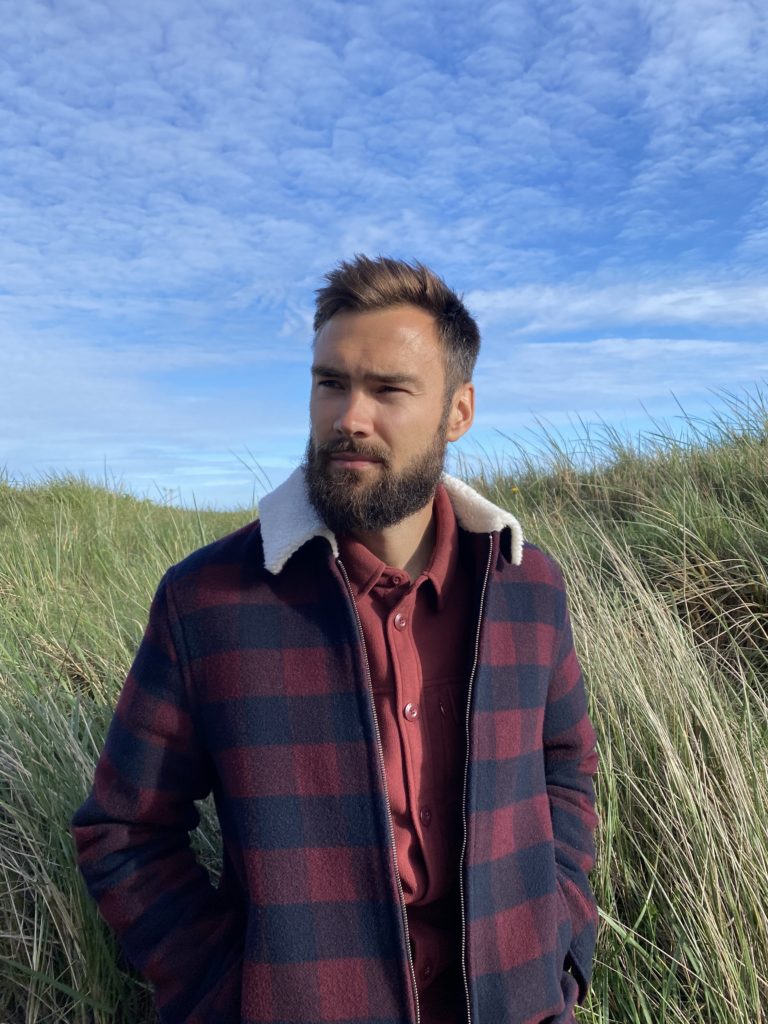
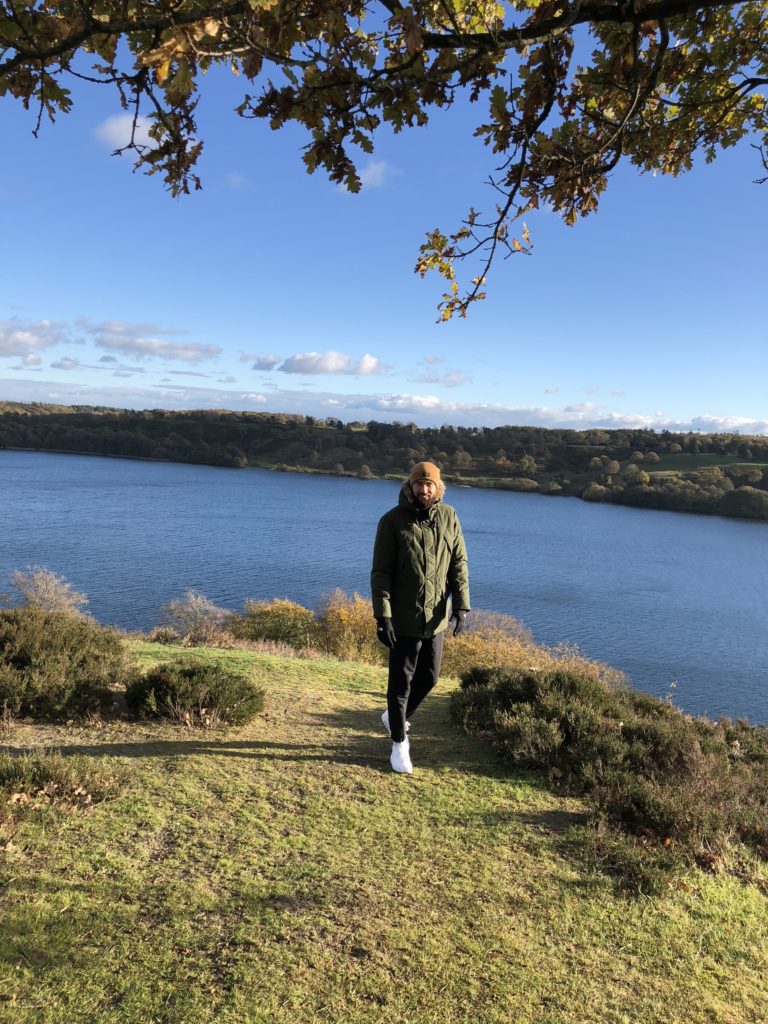
Tim Sparv
Tim Sparv, captain of Finland’s national football team
“For a long time I had this feeling that I wasn’t doing enough for our planet. I had read about climate change and I understood how serious it was, but I was still not capable of actively doing something to reduce my carbon footprint. I was stuck in my old habits.
Like so many times in a man’s life, a woman came to the rescue. I met my girlfriend Jitka in 2017 and she was as passionate about enviromental issues as I was about football. She educated me and made me realise that everyone can do something, and that everyone should do something, no matter how small. That was the start of my personal journey to do more for our climate.
I’ve always been sorting waste but Jitka made it clear that there was still room for improvement in this area. Thanks to her advice I became more focused and diligent. I’ve also started biking more frequently instead of taking my car and I’ve recently began offsetting my emissions when I fly.
I’ve taken part in multiple climate campaigns where I’ve tried to use my voice and platform to spread awareness of climate change. I’ve also teamed up with the non-profit organization Helsinki Foundation in an effort to educate the public about land conservation and how it can help preserve our nature for future generations.
My food habits have also changed. I eat less meat and more vegan. When I’m grocery shopping I’m more attentive to where the products are from. Choosing local products is good for our enviroment.
These are some of the steps I’ve made during the past few years and I intend on becoming greener in the future. We can all do better. Instead of pointing fingers at others, or expecting the change to come from somewhere else, you might as well start with the (wo)man in the mirror.
My wish for COP26
I write about individual responsibility in my text but there’s no doubt that we need lawmakers and people in power to make it easier and more accessible for citizens to choose a greener path. We need bike-friendly cities, we need rules and regulations that forces big companies to phase out fossil fuels, and we need to reward people and sectors that are making an effort to reduce their impact on our climate. I hope you’ll all use this conference to encourage legislation that gets us closer to our climate goals.”
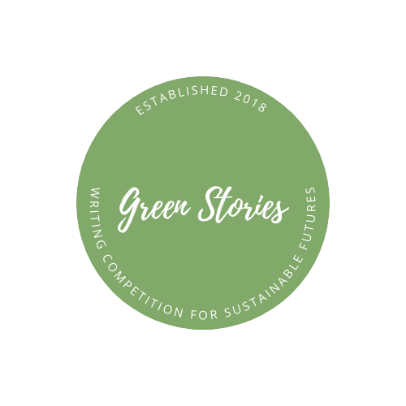
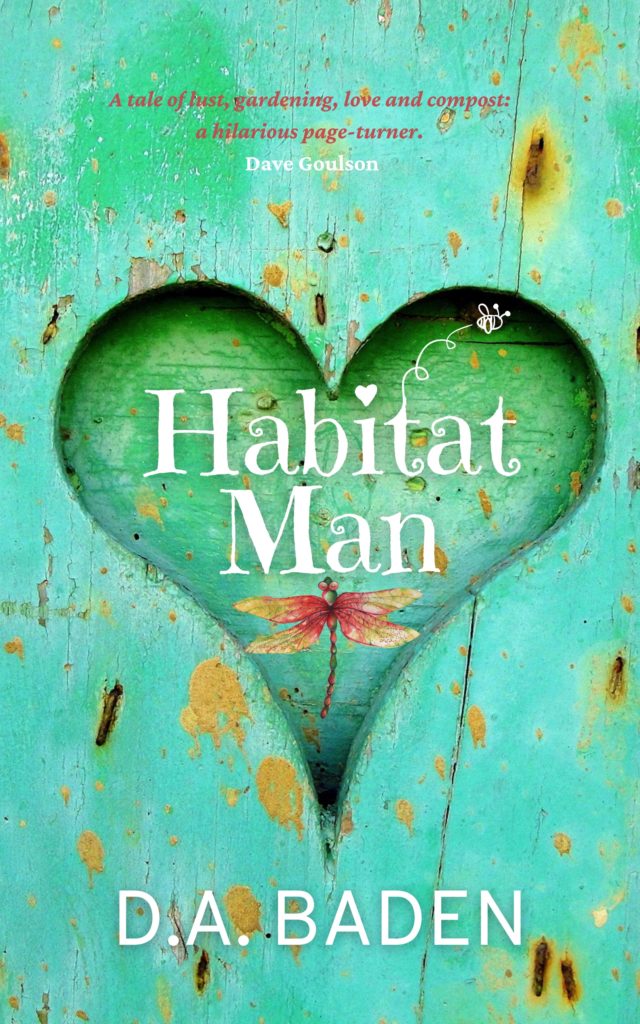
Green Stories writing competition
Denise Baden, Professor of Sustainability at the University of Southampton
“Academics write articles about a sustainable future, but how many people read them? We commonly look to science to address the climate change crisis, but it is the arts and stories that fire imaginations and reach the wider audience.
I research and teach in the area of sustainability at the University of Southampton, and became increasingly worried that most communications on climate change and green behaviour were preaching to the converted, and looked for ways to reach a wider audience.
I thought back and remembered that it was the satirical action novel ‘Stark’ by Ben Elton that had aroused my green awareness and wondered whether fiction could be a way in. I researched how people respond to green issues in fiction and discovered that showing positive role models engaging in pro-environmental behaviours that are easily imitated appeared to be the most motivating kind of story. Thus in 2018 I set up a series of free green stories writing competitions encouraging aspiring writers to look at the green solutions presented on our green stories website and integrate them into their story. There are two key criteria:
- story telling ability – the story should be engaging and
- incorporate green solutions e.g. by
- showcasing what a green/sustainable society might look like and/or how we might get there.
- smuggling green solutions into a story aimed at mainstream readers – this can be quite subtle.
We have now run 12 competitions across several formats (novel, stage play, radio, TV series, screenplay etc.)
Sponsorship from Orna Ross who set up the Alliance of Independent Authors has allowed us to offer generous prizes for the next few years (£1500) including help towards publication. Two previous entries are now being published as books along with an anthology of the 20 best entries into our short story competition.
As a free competition, one issue was that most entries didn’t fit the criteria, misunderstanding the difference between a green theme and green solutions. For example several followed eco-activists in Indonesia fighting rainforest destruction. However who isn’t aware that rainforest destruction happens and is bad thing? Raising awareness on its own doesn’t help and none of the entries incorporated potential solutions readers could engage in such as cutting back on beef, sustainable sourcing of wood etc. To address this I began my own book ‘Habitat Man’ –based on Tim who gives up his accounting job when they turn down his proposal for costing for nature accounting and becomes Habitat Man – advising on making gardens more wildlife friendly. In the process of his journey to find love and meaning and deal with the secrets from his past, readers are exposed to a host of green solutions from wildlife gardening, composting toilets, green funerals, seasonal, low carbon food, how to campaign effectively on green policies, the sharing economy and others.
My wish for COP26 is please give us some cause for hope.”
The Guides and Scouts of Finland
The Guides and Scouts of Finland have committed to be carbon neutral by 2030, and are teaching youth ways to make a difference, showing through their own operations how sustainability can be increased. They call for youth inclusion and climate leadership at COP26.
“We are striving to shrink our own carbon footprint, and we are teaching our members how to make a change in their own everyday lives, but climate action cannot rely just on us individuals.
We need people to take leadership in climate action. I admire people who dare to say their opinions out loud and show their courage and hope for the future. Young people want to be heard and have dialogue with you. We are counting on you and we will answer if you ask.”
Scouts Cymru
In Wales, Scouts Cymru takes practical action in their operations to increase sustainability. The global conservation badge, for example, is teaching young people globally about the environment and humanity’s impact on it.
“Here in Wales we have young people from the ages of six all the way up to twenty-five, who are keen to make a difference and look after our planet.
We have an amazing opportunity to change, and we need to change. Let’s create this world to be a better place.”
Lahti
The green story of Lahti, European Green Capital 2021, started with a lake. Mayor Pekka Timonen tells us how the city has since implemented ambitious long-term climate policies and said goodbye to coal, cutting emissions by 70% since 2009 and is on track to reach carbon neutrality already by 2025.
“It all started with a lake. Lake Vesijärvi, next to Lahti, was the most polluted lake in Finland in the 1980s. Then this city, this community, decided to clean the lake. And today, it’s done.
Since then, we have not looked back.
Lahti has a message: This is a very average European city. Most Europeans live in mid-sized cities like Lahti. We are not the richest, we are not the biggest, and still we have achieved these great goals.
So if we can do it, all cities can.”
Glasgow
Glasgow, the city of COP26, is ready to meet the challenges of the climate emergency head-on, addressing long-standing social, economic and environmental challenges while meeting science-based climate targets. Councillor Susan Aitken discusses the city’s declaration of a climate emergency, as well as its Green Deal, Greenprint projects, and the Sustainable Glasgow Partnership.
“Our net zero future is about safer communities, warm and efficient homes, sustainable jobs and a prosperous economy. Transition has to be about the future of our planet but also the social and economic well-being of Glasgow and our people.
We can match ambition and achievement, combining a green and successful economy with green inclusive and healthy communities, and a safe and secure city.
The success of COP26 will in large part be measured by how cities can take the practical steps necessary to secure the future of our planet. The climate emergency really is the issue of our times. This November Glasgow can show the world we are becoming the city of our times, on the issue of our times.”
UseLess Company
UseLess Company is a small business with a mission is to help companies reduce their climate impact. Maija Leino has seen many small and medium-sized companies are willing to do their share, and more, to reach net zero by 2050.
“Companies are not alone. There is a lot of potential in combining efforts with your suppliers to reduce the climate impact of both parties. Our company is also a small company and when I look into the reaching of net zero emission for us, I also need to look to our suppliers and my team.
My greetings to the meeting are the following: Don’t hesitate to make ambitious nationally determined contributions. The business sector is willing to do their share. Build financial instruments to help finance the change in the needed speed. And, last but not least, the change is done by cooperation. Make it as easy as possible. Help companies turn ambition into action.”
The Centre for Climate Change and Social Transformations (CAST)
Values and fairness are central to behavioural changes needed to tackle the climate crisis. Lorraine Whitmarsh, Professor of Environmental Psychology and Director of the Centre for Climate Change and Social Transformations (CAST), discusses how CAST works with all of society, to understand how to motivate and enable people to change, so that they can take part in this societal transformation.
“This isn’t about small and incremental steps. It’s about transforming behaviour in society. But this won’t only avoid dangerous climate change. This will improve people’s wellbeing.
Our work shows that positive messaging that links to people’s values, to what’s important to them, can engage people with climate change, and that we need to remove the barriers to behaviour change, to make it easier, cheaper, more attractive and more normal for people to take action.
Our wish for COP26 is that governments engage with the public and together create a positive, net zero future, where we not only radically cut our emissions but we have better health and wellbeing, green jobs, more inclusivity and equity, and stronger ecosystems.”
Youth Delegates
Youth Delegates for Climate at the Finnish Youth Council, Emma Sairanen and Maija Kuivalainen, highlight six policy asks from the Mock COP26 treaty written by young people.
“We call for all governments to set a timetable for phasing out all fossil fuels and to stop all searches for new fossil fuel reserves.
We also feel that the time for freely distributing false information about the ecological crisis we are facing should be over.
Thirdly we recognise the interlinkages between nature loss and climate change (…) implementing nature’s rights and protecting 30 percent of the planet by 2030.
The rights of indigenous peoples should be respected by extending legal protection to the rights of indigenous peoples to their land and way of life.
We also wish world leaders to make sure youth are included in their delegations and youth voice be heard in both national and international decisionmaking related to climate change.
Since people in the Global South and indigenous peoples are particularly affected by climate change and biodiversity loss we feel that they should be consulted first and foremost on these issues. ”
Juliet Achieng Owuor researches and identifies green jobs and regenerative activities in the forest sector.
Cleo Orfanidou raises the climate impact – and mitigation potential – of the built environment.
European Forest Institute
The European Forest Institute international organisation conducting research and providing policy support on forest-related issues, connecting knowledge to action.
Junior researchers of EFI discuss their research, sharing their wishes and insight for COP26.
Blasius Schmid hopes COP26 recognises the potential for economic and ecological prosperity that forests and forest bioeconomy offer.
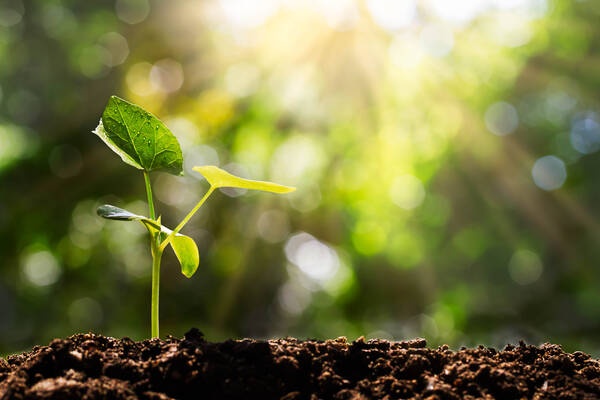
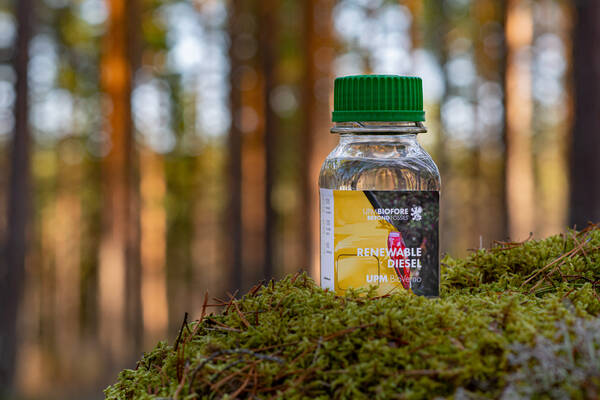
UPM
At UPM we are committed to act in line with the United Nations 1.5°C Business Ambition. We’re also signatories of The Climate Pledge by Amazon and the Global Optimism that shares a goal to reach the targets of the Paris Agreement 10 years ahead. We can make tangible impact through our whole value chain by practicing climate-positive forestry in our forests, by reducing the emissions in our own operations by 65% by 2030, and by offering a wide range of innovative, renewable materials and products to substitute fossil consumption. Many of our products are already today climate-positive, and we aim to scientifically verify the climate impacts of all our products.
In a climate-positive forestry sector, where forests grow more than they are used, growth is increased by combining economic, ecological and social aspects. Substitution of fossil materials, carbon sequestration, biodiversity protection and creating economic value should be approached holistically, not in silos. For businesses, climate change is the most strategic issue. UPM calls for a strong signal to replace fossils with renewable materials when creating climate neutrality pathways. Legislators can and should steer the direction of the future, but at the same time enable market-driven development. Consistency is essential as industrial companies are investing for decades to come.
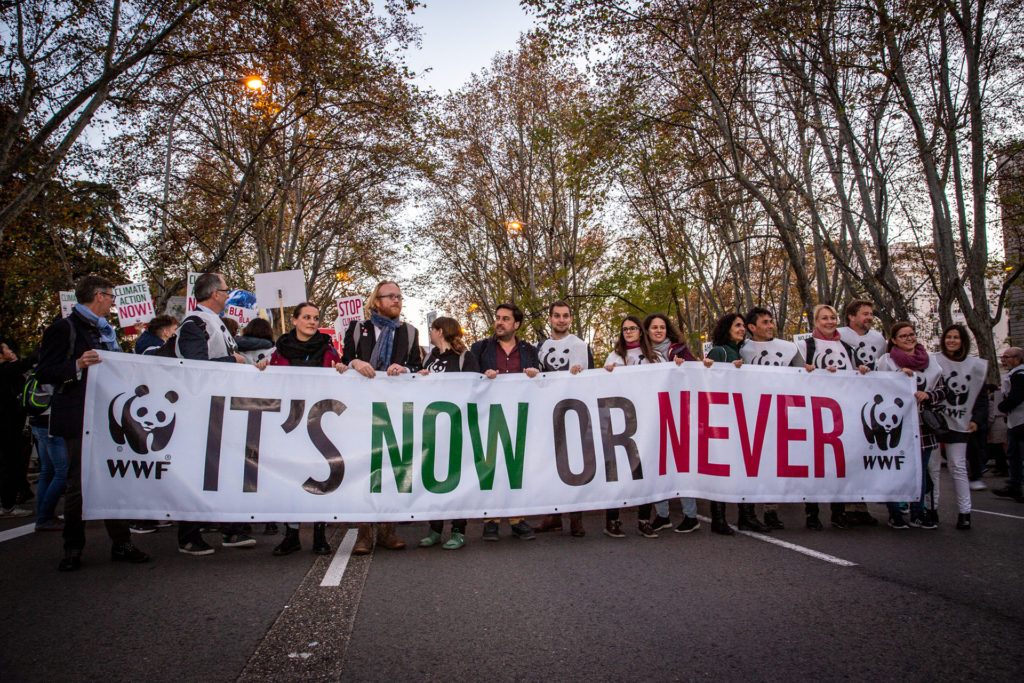
WWF Finland
Climate change is a major threat to biodiversity both in Finland and globally. Climate change is already affecting the Finnish nature. That’s why WWF Finland is running multiple campaigns and projects with a strong focus on climate issues:
- The Climate programme is doing advocacy work on EU and national level.
- The EU funded project Eat4Change is run by our Food programme in 11 countries across Europe and Latin America. The project is engaging citizens, in particular youth, and pushing for a shift toward more sustainable diets and food production practices.
- We are supporting projects based on Nature based solutions in developing countries in Africa and Asia.
- We are promoting conservation and management practises maintaining and strengthening the carbon sinks of forests.
- We are raising awareness about how climate change is affecting our unique nature already today and potentially even more severely in the coming decades.
Our wish for COP26
We want to see All hands on deck! All parts of the society should join forces and do their own share of climate action.
WWF Finland urges all governments to set aside their short-term national interests and contribute in a constructive manner to a bold agreement on how to limit global warming to 1.5 degrees.
Atte Harjanne
Atte Harjanne, Member of the Finnish Parliament and Helsinki City Councillor for the Green Party, urges countries to amass the political will needed for climate action at COP26.
“Climate change is finally a mainstream issue in all sectors and scales of decision-making. Taxation, economics, urban planning, industrial policy, security – there’s no issue where climate change would not be a factor or issue today.
For me, both as a researcher and a policy maker, it’s clear that the bottleneck in the progress towards a sustainable low-carbon future is not lack of knowledge but decision-making – a lack of political will and ability.
COP26 at Glasgow is a key place to show that this will and ability exists.”
The Natural Resources Institute Finland, Luke
Natural Resources Institute Finland, LUKE, works towards a carbon neutral society where resources are used sustainably. LUKE provide new solutions towards the sustainable development of the Finnish bioeconomy and the promotion of new biobased businesses, helping build a society based on bioeconomy.
“The research in LUKE focuses on renewable natural resources, which in practice means the use of forest, peatlands and agricultural areas.
The goal of our research is a carbon neutral society which uses its resources in a sustainable and acceptable manner. To achieve this we develop models, methodologies and policy views that help the forestry, agriculture and food system sectors to reach the carbon neutrality targets and adapt to climate changes.”
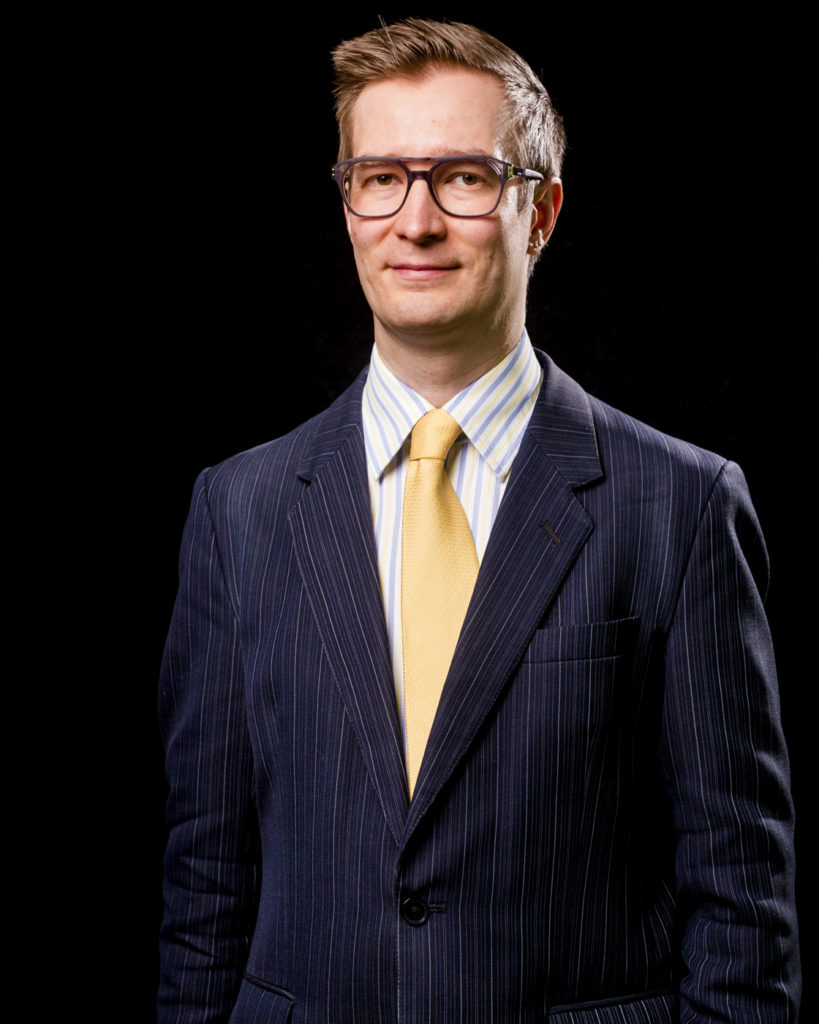
The Finnish Innovation Fund, Sitra
Oras Tynkkynen
We are all small – and we are all powerful
“Let’s face it: the climate crisis is a ginormous challenge. If not properly addressed, global heating will shake the very foundations of our civilisation.
But properly addressing the climate crisis, too, requires changes at unprecedented scale and speed. To have any chance of limiting global heating to 1.5°C, we would need to cut global emissions by around 7 per cent a year. Not just in the wealthiest countries, but globally. Not just for a couple of years, but every single year until mid-century.
Quite understandably this has led many to react with apathy, even paralysis. In small countries like Finland, a common sentiment is that we are just way too small to have any real impact.
And indeed we are small. Finland produces only a tad more than 0.1% of global emissions.
But here’s the thing: faced with such a massive crisis, we are all small. The UK is far bigger than Finland, yet still small: producing less than 1% of world’s emissions. Even China – a giant with about 1.4 billion people – is “only” responsible for about a quarter of global emissions.
So we are all small, even the biggest among us. Luckily being small does not mean being powerless.
Sitra, the Finnish Innovation Fund, recently released a working paper looking at the global role of small countries in tackling the climate crisis. What we found was that even small countries like Finland can have – and in many cases have already had – a big impact.
For instance, Finnish Neste is the world’s biggest producer of renewable diesel. Finland was the first country in the world to introduce a carbon tax. The Coalition of Finance Ministers for Climate Action was initiated by Finland – and now it covers 2/3 of the world economy.
Similarly, the UK has repeatedly blazed a trail. The seminal Climate Act of 2008 has been the gold standard for climate legislation in dozens of countries – including Finland. The UK’s rapid phase-out of coal has been as historic as was its introduction at the dawn of the industrial revolution. Today, phasing out internal combustion engines and phasing in electric vehicles the UK is yet again showing many other countries the way forward.
Yes, faced with the climate crisis we are all small. But we can also all be powerful. By mobilising the whole of society and mustering the willpower that addressing this historic moment calls for, all countries can make a difference.”
The Finnish Climate Change Panel
The Finnish Climate Change Panel is a multidisciplinary advisory council providing scientific advice for policy making to tackle climate change.
“Our aim is to help to build a sustainable future for Finland with the help of the best available scientific knowledge. The Panel was asked by the government to advise on what kind of targets should be set for Finland to put in a fair and just effort towards the Paris agreement and its goals.
Our Panel isn’t just about natural or engineering sciences, but social sciences too.
We have looked at the equity effects of the energy transition: How to include justice in climate policy making and what kind of behavioural changes are possible for a more climate-friendly future.
In COP26 we wish for the messages of the IPCC to guide the strengthening of NDCs and science-based policy advice to spread across the world. The upcoming launch of the International Network of Climate Councils, which the Finnish Panel has taken part in establishing, will help countries without councils to get a head start in science-based climate policy.”
The Finnish Ministry of the Environment
Marjo Nummelin, Chief Negotiator for Climate Change at the Finnish Ministry of the Environment, discusses her hopes for COP26 ahead of the conference.
“The Environment Ministry and especially our team in the Climate Unit promotes ambitious climate action at all levels be it international, European Union, national or local. We have the targets and goals agreed and now it is really time to ensure full implementation at all levels.
I hope that all parties and all actors take especially the messages from the latest IPCC report seriously, meaning that we need urgent action now to keep the 1.5 degree target in sight also.
In addition, I hope that we will be finally able to agree the final elements of the so-called Paris Rulebook which is needed for parties to implement the Paris Agreement and that means especially now the rules for the international market mechanism.”
The Ministry for Foreign Affairs of Finland
Jan Wahlberg, Finland’s Ambassador for Climate Change at the Ministry for Foreign Affairs, discusses Finland’s climate action and his hopes for COP26 to keep the 1.5 degree target alive.
“As Finland’s ambassador for climate change I am heading to Glasgow with a hopeful mind. Most of all it is vital that we close the gaps on both climate finance and raising climate ambition.
We owe it to our children. We must keep 1.5 degrees within reach. ”
Nordic Council of Ministers
The Nordic Council of Ministers is working towards building a competitive, green and socially sustainable Nordic region.
“The Nordic countries aim to become the world’s most sustainable and integrated region by 2030.
We know that climate change poses a big challenge but in addition to that, one major concern is loss of biodiversity.
It’s a very exciting moment because there’s so much happening in the Nordics on phasing out particularly fossil fuels that I think we are really seeing a turning point. This is giving quite an exciting modern welfare future that will give many benefits in terms of well beyond environment, but we still have a lot of work to do.”
David Moran, COP26 Ambassador for Europe
David Moran, COP26 Regional Ambassador for Europe, describes COP26 as the best hope for tackling runaway climate change, and the chance to consign coal to history for good.
“A successful COP26 is our best hope of limiting global warming to 1.5 degrees and building a brighter future of green jobs and cleaner air.
The single most powerful thing we can do to get there? Consign coal to history – one of my top priorities.
The world deserves a cleaner, more prosperous future. We must help deliver it.”
